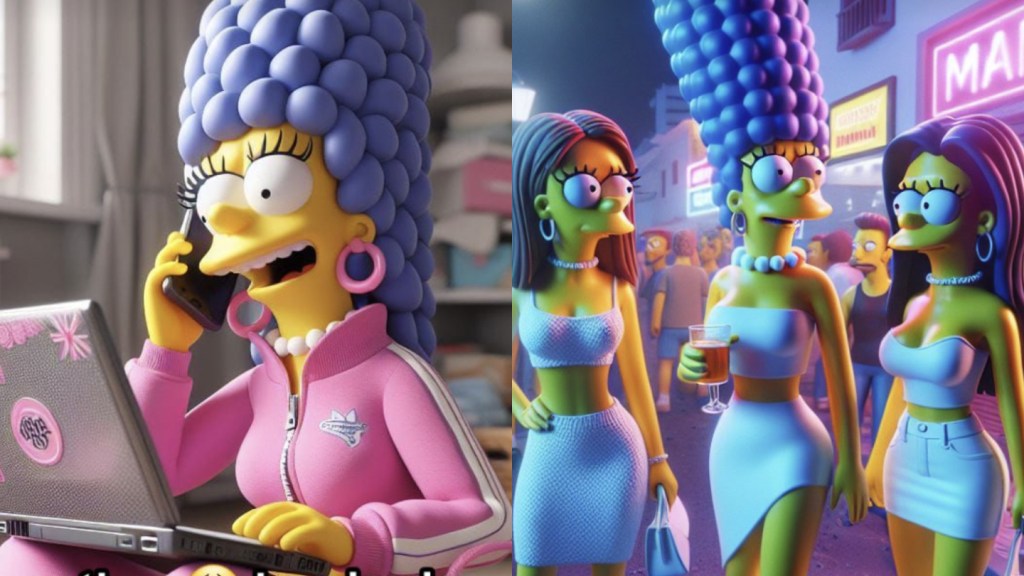Exuberant, unforgettable—but at least half an hour too long—American Honey is set in an America largely forgotten by the middle-class-centric coastal media. Centering on an 18-year-old drifter named Star, played by newcomer Sasha Lane in a revelatory turn, the picture meditates on a scarred outsider trying to find some sense of peace and self-determination in a world that has put her two steps behind from the start.
Directed by the British-born Cannes regular Andrea Arnold, who didn’t know the US that well before embarking on an odyssey from the oil fields of North Dakota to the parking lots of Kansas, American Honey has become a prime contender for the Palme d’Or. As Arnold prepared the film, she traveled the country, driving 12,000 miles through the American South and Heartland, trying to give its forgotten corners a place in her heart. “I needed to make a connection with it,” she said at the press conference for the film, flanked by her mostly unknown cast, her veteran producers, and the inimitable Shia LaBoeuf.
Videos by VICE
The film was shot by Arnold’s regular cinematographer Robbie Ryan in the 4:3 aspect ratio they have used on many of Ryan’s shorts and her remarkable 2013 adaptation of Wuthering Heights. The camera weaves and darts around its characters with the same abandon that Star tries to navigate a hard-luck life with pluck and dexterity. In this story of a wayward young woman of color, the daughter of a deceased meth addict, trying to get by in an America not designed to allow her to self-actualize, Arnold and Ryan have captured an America the cinema rarely visits. The resulting movie blends Larry Clark’s low-country lyricism and the ecstatic splendor of Terence Malick with a pop-heavy soundtrack to remarkable effect, and the film feels like a culmination of Arnold’s singular aesthetic. American Honey displays an immediacy and a prairie candor that few filmmakers go searching for in what the most callous of us call flyover country.
For the mixed-race protagonist, getting by means running off from everything she knows to join up with a door-to-door magazine sales crew that she encounters at a K-Mart. Members of an off-the-grid economy, the salespeople go from house to house pushing subscriptions on unsuspecting families that are, more and more, likely to be wielding an iPad when they come to the door. Although at first seemingly led by the charismatic Jake (Shia LaBoeuf, never better), they actually report to Krystal, an ice-cold, blue-eyed Southern lady (Riley Keough) who rules with an iron first from her second-story motel room in a roadside roachfest. She’s the type of woman who occasionally delivers sterns lectures while wearing a stars-and-bars bikini, and Jake seems in thrall to Krystal, despite the instant sparks whenever he and Star encounter each other.
The spirited and damaged Star isn’t the most efficient salesperson. She doesn’t like lying and isn’t very good at holding back her opinions of others. Trained by Jake, she veers into profanity in an upper-middle-class Christian home, scaring off a potential mark. Frequently she runs off—one episode, involving four white guys in gallon hats is simultaneously the movie’s most entertaining and disturbing interlude. Yet she always returns to the crew, who display a lived-in chemistry that belies that fact that most of them are non-actors. Casted by noted documentarian Jennifer Venditti, only Arielle Holmes—who had a recent, star-making turn in the Safdie brothers’ Heaven Knows What—had acted in a film before. Lane, a Texas college student who is the whirling dervish at the center of the piece, was spotted by Arnold and Venditti at a Spring Break party in Panama City, Florida. They initially met over lunch at Waffle House and afterward Arnold knew she had found her woman.
The film drew its initiation inspiration by a 2007 New York Times article by Ian Urbina about crews of wayward, homeless youth that travel the American plains selling magazines. Arnold tracked down such crews to see how they operate in person. She traveled the American byways with just such a crew, sleeping in flee-ridden motels and embarking on long day trips in 15-passenger vans, past West Virginia towns where the only open businesses were pharmacies that deal out painkillers to the old.
For LeBoeuf, who was eager to do the film after meeting with Arnold, little about this white underclass was new. “In Bakersfield, where my father lived for a stint, the only thing that there is a prison,” he said, when asked about his research. “That’s not new information. I’m part of that underclass. That’s where I come from, so I know about it.
Regardless of what where research ends and experience begins, it has resulted in a stunning, if slightly overlong epic that seems like a real contender for the coveted Palme D’Or.
“They aren’t really buying the magazines, they are buying the person who is selling the magazines,” Arnold said when asked who on earth, in our web-centric media culture, still buys magazines from traveling salespeople. Not that many other opportunities exist for the small-town uneducated.
“In a lot of the smaller towns, the fast-food restaurants seemed like one of the main things you could do,” Arnold recalled. “That seemed sad to me.”
Follow Brandon Harris on Twitter. Read more of his coverage of Cannes 2016 here.



